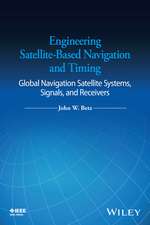A Geological Manual: 1831 Edition: Cambridge Library Collection - Earth Science
Autor Henry T. De la Becheen Limba Engleză Paperback – 5 noi 2014
Din seria Cambridge Library Collection - Earth Science
- 19%
 Preț: 559.53 lei
Preț: 559.53 lei - 23%
 Preț: 1044.28 lei
Preț: 1044.28 lei -
 Preț: 386.22 lei
Preț: 386.22 lei - 23%
 Preț: 720.53 lei
Preț: 720.53 lei - 19%
 Preț: 533.47 lei
Preț: 533.47 lei - 23%
 Preț: 1015.84 lei
Preț: 1015.84 lei -
 Preț: 186.54 lei
Preț: 186.54 lei -
 Preț: 375.23 lei
Preț: 375.23 lei -
 Preț: 277.67 lei
Preț: 277.67 lei - 19%
 Preț: 435.37 lei
Preț: 435.37 lei -
 Preț: 329.98 lei
Preț: 329.98 lei -
 Preț: 331.70 lei
Preț: 331.70 lei -
 Preț: 257.89 lei
Preț: 257.89 lei -
 Preț: 278.81 lei
Preț: 278.81 lei - 19%
 Preț: 461.39 lei
Preț: 461.39 lei -
 Preț: 329.56 lei
Preț: 329.56 lei -
 Preț: 533.33 lei
Preț: 533.33 lei -
 Preț: 368.48 lei
Preț: 368.48 lei -
 Preț: 516.01 lei
Preț: 516.01 lei -
 Preț: 468.66 lei
Preț: 468.66 lei -
 Preț: 464.07 lei
Preț: 464.07 lei -
 Preț: 330.93 lei
Preț: 330.93 lei -
 Preț: 244.05 lei
Preț: 244.05 lei -
 Preț: 531.96 lei
Preț: 531.96 lei -
 Preț: 337.18 lei
Preț: 337.18 lei -
 Preț: 330.93 lei
Preț: 330.93 lei -
 Preț: 367.71 lei
Preț: 367.71 lei -
 Preț: 256.44 lei
Preț: 256.44 lei -
 Preț: 331.89 lei
Preț: 331.89 lei -
 Preț: 418.32 lei
Preț: 418.32 lei -
 Preț: 475.61 lei
Preț: 475.61 lei -
 Preț: 465.60 lei
Preț: 465.60 lei -
 Preț: 353.69 lei
Preț: 353.69 lei -
 Preț: 356.58 lei
Preț: 356.58 lei -
 Preț: 330.75 lei
Preț: 330.75 lei -
 Preț: 315.54 lei
Preț: 315.54 lei -
 Preț: 314.23 lei
Preț: 314.23 lei
Preț: 347.50 lei
Nou
Puncte Express: 521
Preț estimativ în valută:
66.49€ • 69.62$ • 55.15£
66.49€ • 69.62$ • 55.15£
Carte disponibilă
Livrare economică 20 martie-03 aprilie
Preluare comenzi: 021 569.72.76
Specificații
ISBN-13: 9781108075121
ISBN-10: 1108075126
Pagini: 554
Ilustrații: 105 b/w illus.
Dimensiuni: 140 x 216 x 31 mm
Greutate: 0.69 kg
Editura: Cambridge University Press
Colecția Cambridge University Press
Seria Cambridge Library Collection - Earth Science
Locul publicării:Cambridge, United Kingdom
ISBN-10: 1108075126
Pagini: 554
Ilustrații: 105 b/w illus.
Dimensiuni: 140 x 216 x 31 mm
Greutate: 0.69 kg
Editura: Cambridge University Press
Colecția Cambridge University Press
Seria Cambridge Library Collection - Earth Science
Locul publicării:Cambridge, United Kingdom
Cuprins
Preface; Section I: 1. Figure of the Earth; 2. Density of the Earth; 3. Superficial distribution of land and water; 4. Saltness and specific gravity of the sea; 5. Temperature of the Earth; 6. Temperature of springs; 7. Temperature of the sea and lakes; 8. Temperature of the atmosphere; 9. Valleys; 10. Changes on the surface of the globe; 11. Classification of rocks; Section II: 12. Degradation of land; 13. Delivery of detritus into the sea; 14. Action of the sea on coasts; 15. Shingle beaches; 16. Sandy beaches; 17. Tides; 18. Currents; 19. Transporting power of tides; 20. Transporting power of currents; 21. Active volcanos; 22. Extinct volcanos; 23. Mineral volcanic products; 24. Volcanic dykes, etc.; 25. Earthquakes; 26. Gaseous exhalations; 27. Deposits from springs; 28. Naphtha and asphaltum springs; 29. Coral reefs and islands; 30. Submarine forests; 31. Raised beaches and masses of shells; 32. Organic remains of the modern group; Section III: 33. Erratic blocks and gravel; 34. Ossiferous caverns and osseous breccia; Section IV: 35. Supracretaceous (tertiary) group; 36. Volcanic action during the supracretaceous period; Section V: 37. Cretaceous group (chalk and green sand); 38. Wealden rocks; Section VI: 39. Oolitic group; Section VII: 40. Red sandstone group; Section VIII: 41. Carboniferous group; Section IX: 42. Grauwacke group; Section X: 43. Lowest fossiliferous group; Section XI: 44. Inferior stratified or non-fossiliferous rocks; Section XII: 45. Unstratified rocks; Section XIII: 46. On the mineralogical differences in contemporaneous rocks; 47. On the elevation of mountains; 48. On the occurrence of metals in rocks; Appendix; Index.
Descriere
Reissued in its 1831 first edition, this work sought to help students grasp the fundamentals of a rapidly advancing science.








